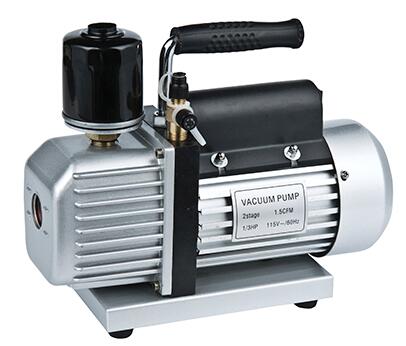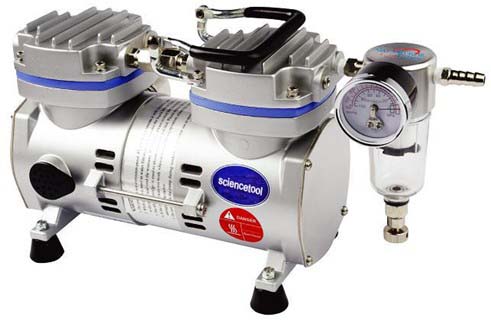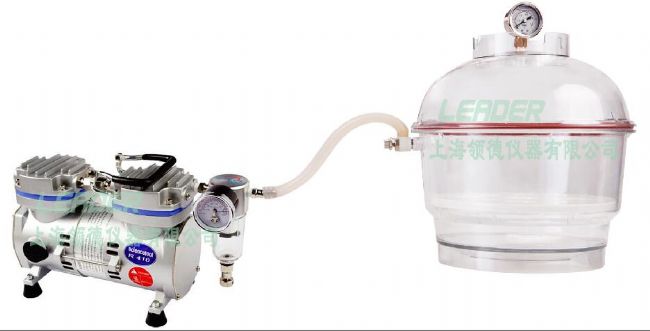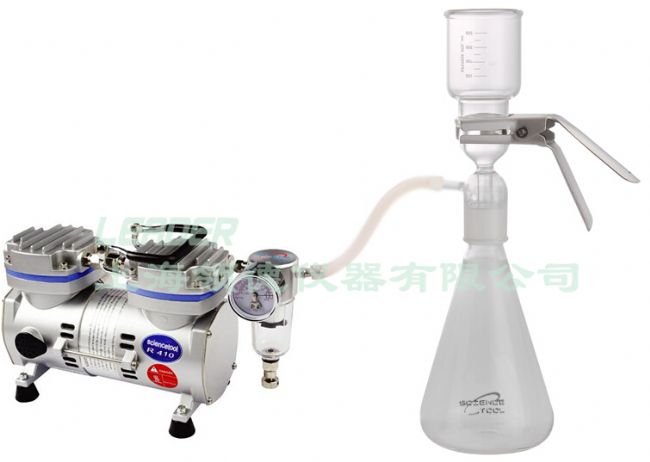Structural advantages and application of laboratory oil-free vacuum pump
The laboratory oil-free vacuum pump is a vacuum pump product which is relatively advanced and widely used, and is suitable for the laboratory of university research institutes, pharmaceutical industry enterprises, agriculture and forestry environmental supervision and other units. Customers in these traditional areas usually use water circulation pumps and oil pumps to work with their own instruments. However, the water circulation pump needs to be connected to the water source, which limits the water pump to be used only near the water tank, and the water in the water tank may also be sucked up; The oil pump needs to add pump oil, and it also produces oil mist pollution. It needs to be equipped with an oil mist filter. The oil pump needs to add pump oil, and the pump oil also has the possibility of sucking back. At the same time, the pump oil needs to be replaced frequently, and the oil pump will generate certain oil mist pollution when working. All in all, both products require the assistance of other media to work properly. Oil-free vacuum pumps are very compact in shape because they do not need to rely on other media. According to the above characteristics, the laboratory oil-free vacuum pump is very suitable for the following applications, or with the following instruments: 1. Laboratory various liquid aspiration: mainly including the waste liquid suction of the culture medium, the supernatant of the centrifuge tube, and the suction of the residual liquid after other tests. These uses should absolutely avoid the pump oil or water source sucking back, and the medium waste liquid suction is a product that needs more pollution-free operation in the clean room. Therefore, an aspiration pump designed with an oil-free principle is the best choice. When selecting the specific type, consider all other factors: liquid suction and pay attention to the size of the waste bottle, and select the appropriate suction head (such as 96-well plate with 8 tips, culture). Bottles with long tips), medium waste extraction is best to use a product with a foot switch (can avoid using a gloved hand to press the switch on the host panel). It is recommended to use BV240 oil-free vacuum suction pump for medium waste suction, with foot switch and 3000ml large-capacity waste bottle (large-capacity waste bottle can reduce the number of liquid dumping due to use in clean room); Others such as centrifuge tube supernatant and 96-well plate raffinate suction are recommended for L100BS. This model is extremely small and weighs only 1.2KG, with a variety of pipette tips including 8 tips. The transparent plastic glass dry tank is generally small in volume, and the oil-free products can meet the needs. 3. Vacuum filtration (pressure filtration): Vacuum filtration requires vacuuming the inside of the suction bottle to form a pressure difference between the inside and the outside, so that the atmospheric pressure pushes the filtered hydraulic filter. Vacuum filtration is generally not required for pumping speed and vacuum, and vacuum pumps with no oil design can be fully satisfied. Ordinary 5L filter bottles and triple filter groups are recommended to use R300 oil-free vacuum pump. As shown in the figure (FS410V suction filter device), viscous and high-particle, impurity sample filtration can also use oil-free vacuum pump, the vacuum can fully meet For very few cases, such as viscous samples, water samples with high particulate matter or more magazines (such as water samples sampled in the field, sewage), the filter may be easily covered during filtration, and the liquid will generate greater resistance. This will cause the filtering speed to be too slow or even filtered. This is a pump that requires a higher degree of vacuum and tends to produce a larger thrust to squeeze the filtrate. Traditionally, many customers have chosen oil pumps for this application, but the vacuum of vacuum-free vacuum pumps has also increased, and there is no difficulty in filtering such samples. Recommended R410, up to 750mmHg vacuum, can fully meet the filtration needs of such high particulate content or high viscosity. 4. With other instruments and equipment as the gas source: This type of application is more diverse, and because it needs to be matched with other equipment, if the use of oil pump or water pump may affect the supporting equipment, it is generally recommended to use oil-free vacuum pump. For detailed product information, please visit our website. Application Fitting And Installation,Fitting wall panels,Bath Panel Fitting Instructions Ningbo Wellway Optoelectronic Technology Co.,Ltd , https://www.wellwayopto.com

Compared with the above two traditional products, the new laboratory oil-free vacuum pump is characterized by complete dry operation, no need to connect water source or add pump oil, and only needs to be inserted to work properly. Dry test operation makes it usable in any place without restriction. It does not need to change the pump oil to avoid the trouble of future maintenance; it does not cause oil mist pollution, and can be used in rooms with high requirements such as clean room. . These features make it possible to compensate for some of the unusable drawbacks of conventional vacuum pump products. If the cell culture solution is pumped in the clean room or the culture medium is filtered, the oil pump will produce oil mist. The clean room has no water source and the pump cannot be used, and the oil-free design laboratory vacuum pump will not have such inconvenience; When the drying box or the filter is used, the water and the pump oil are easy to be sucked up, and the dry operation has no such concerns at all. 


2. Vacuum drying oven (or small vacuum dryer): Generally, the small vacuum dryer has a small volume. It only performs the dehydration and drying operations that can be seen. It can be used with an oil-free vacuum pump. If the R410 is used, the machine is small and convenient. On the desktop, plug-in is available. For the vacuum oven, it should be selected according to the specific conditions. The oil-free vacuum pump is currently unable to reach the level of the oil pump due to technical limitations. At present, it is only suitable for vacuum drying ovens below 50L (optional R610) For larger tanks, it is recommended to use an oil pump to achieve a higher vacuum in a shorter period of time. 